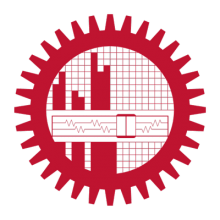Dr. Khandker Farid Uddin Ahmed
Professor
Specialization
Specialization
Ring and Module Theory
Academic Biography
Contact
- Email: farid@math.buet.ac.bd
| All Publications |
|---|
|
Rehena Nasrin,
Saddam Hossain,
Ishrat Zahan,
Khandker Farid Uddin Ahmed ,
Hussain Fayaz
Performance analysis of hybrid/single nanofluids on augmentation of heat transport in lid-driven undulated cavity Wiley, 24 June, 2020 Publication Type: Journal View Summary/Abstract , Publication Link
This numerical study reveals the heat transfer performance of hybrid/single nanofluids inside a lid-driven sinusoidal trapezoidal-shaped enclosure. The right and left inclined surfaces of the trapezium have been considered as insulated, whereas the bottom sinusoidal wavy and the flat top surfaces of the enclosure as hot and cold, respectively. The governing partial differential equations of fluid's velocity and temperature have been resolved by applying the finite element method. The implications of Prandtl number (4.2-6.2), Richardson number (0.1-10.0), undulation number (0-3), nanoparticles volume fraction (0%-3%), and nanofluid/base fluid (water, water–copper (Cu), water–Cu–carbon nanotube, water–Cu–copper oxide (CuO), water–Cu–TiO2, and water–Cu–Al2O3) on the velocity and temperature profiles have been studied. Simulated findings have been represented by means of streamlines, isothermal lines, and average Nusselt number of above-mentioned hybrid nanofluids for varying the governing parameters. The comparison of heat transfer rates using hybrid nanofluids and pure water has been also shown. The heat transfer rate is increased about 15% for varying Richardson number from 0.1 to 10.0. Blending of two nanoparticles suspension in base fluid has a higher heat transfer rate—approximately 5% than a mononanoparticle. Moreover, a higher average Nusselt number is obtained by 14.7% using the wavy surface than the flat surface of the enclosure. Thus, this study showed that applying hybrid nanofluid may be beneficial to obtain expected thermal performance.
|
|
Nguyen Van Sanh,
S. Asawasamrit,
K. F. U. Ahmed ,
Le Phuong Thao
ON PRIME AND SEMIPRIME GOLDIE MODULES World Scientific, June, 2011 Publication Type: Journal View Summary/Abstract , Publication Link
A right R-module M is called a Goldie module if it has finite Goldie dimension and satisfies the ACC for M-annihilator submodules of M. In this paper, we study the class of prime Goldie modules and the class of semiprime Goldie modules as generalizations of prime right Goldie rings and semiprime right Goldie rings.
|
|
Nguyen Van Sanh ,
Nguyen Anh Vu ,
K. F. U. Ahmed ,
S. Asawasamrit,
Le Phuong Thao
PRIMENESS IN MODULE CATEGORY World Scientific, 2010, 2010 Publication Type: Journal View Summary/Abstract , Publication Link
We introduce the notion of prime submodules of a given right R-module and describe all properties of them as a generalization of prime ideals in associative rings.
|



